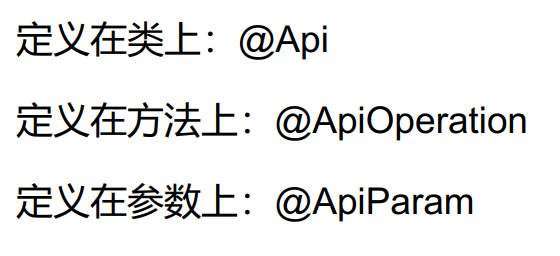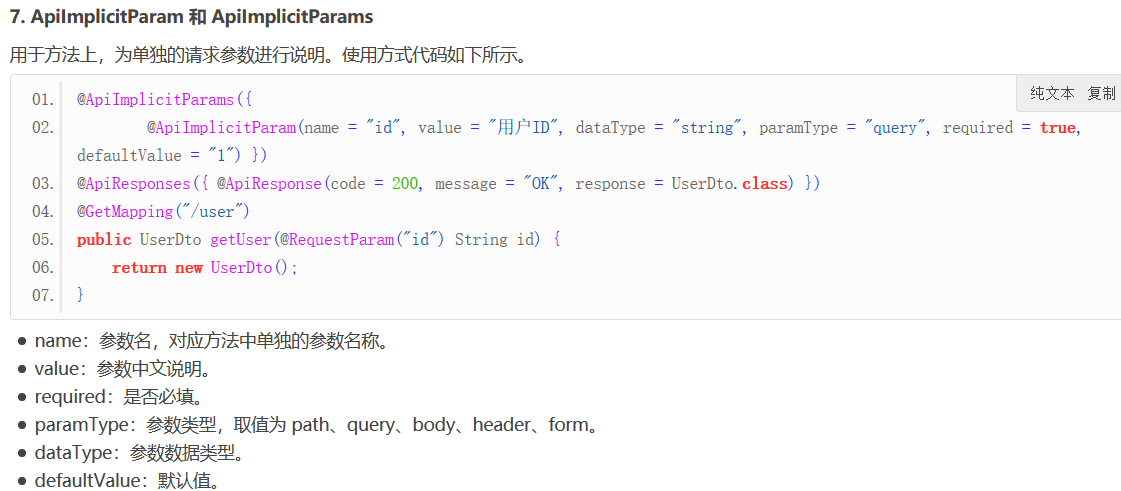前后端分离开发模式中,api文档是最好的沟通方式。
Swagger 是一个规范和完整的框架,用于生成、描述、调用和可视化 RESTful 风格的 Web 服务
1. 及时性 (接口变更后,能够及时准确地通知相关前后端开发人员)
2. 规范性 (并且保证接口的规范性,如接口的地址,请求方式,参数及响应格式和错误信息)
3. 一致性 (接口信息一致,不会出现因开发人员拿到的文档版本不一致,而出现分歧)
4. 可测性 (直接在接口文档上进行测试,以方便理解业务)
1. 引入swagger依赖
<properties>
<swagger.version>2.7.0</swagger.version>
<properties>
<!--swagger--> <dependency> <groupId>io.springfox</groupId> <artifactId>springfox-swagger2</artifactId> <version>${swagger.version}</version> </dependency> <!--swagger ui--> <dependency> <groupId>io.springfox</groupId> <artifactId>springfox-swagger-ui</artifactId> <version>${swagger.version}</version> </dependency>
2. 创建类SwaggerConfig
@Configuration @EnableSwagger2 public class SwaggerConfig { @Bean public Docket webApiConfig(){ return new Docket(DocumentationType.SWAGGER_2) .groupName("webApi") .apiInfo(webApiInfo()) .select() .paths(Predicates.not(PathSelectors.regex("/admin/.*"))) //admin路径不监控 .paths(Predicates.not(PathSelectors.regex("/error.*"))) //错误路径不监控 .paths(PathSelectors.regex("/.*")) .build(); } private ApiInfo webApiInfo(){ return new ApiInfoBuilder() .title("网站-课程中心API文档") .description("本文档描述了课程中心微服务接口定义") .version("1.0") .contact(new Contact("Helen", "http://atguigu.com", "55317332@qq.com")) .build(); } }
3. 引入该公共模块,即把该配置注入spring
4. 在需要swagger启动类上添加注解
@ComponentScan(basePackages = "com.atguigu")
5. 使用注解定义各种注释







